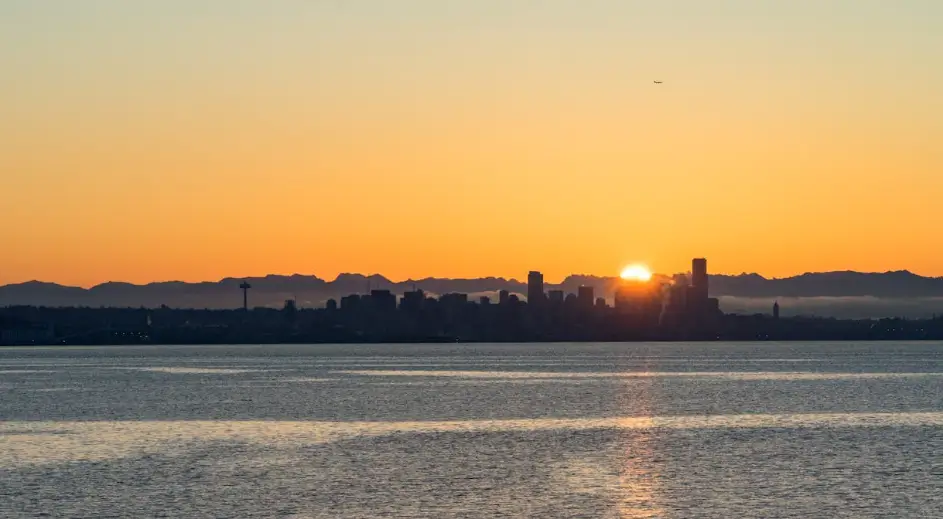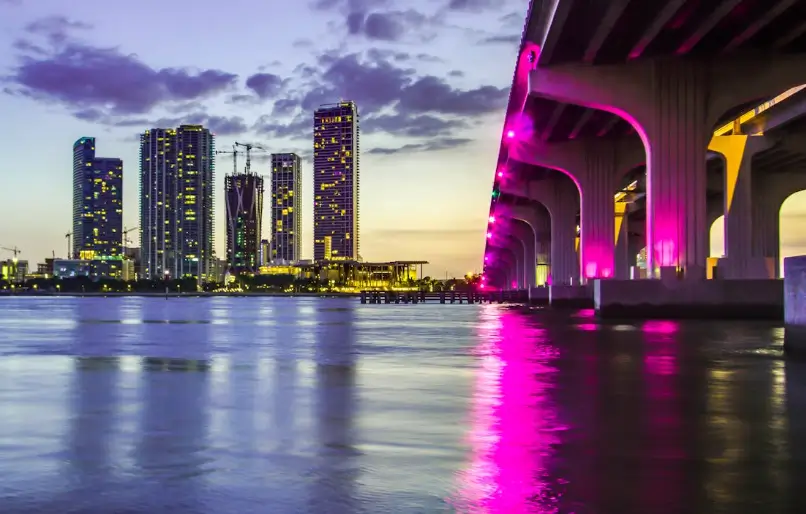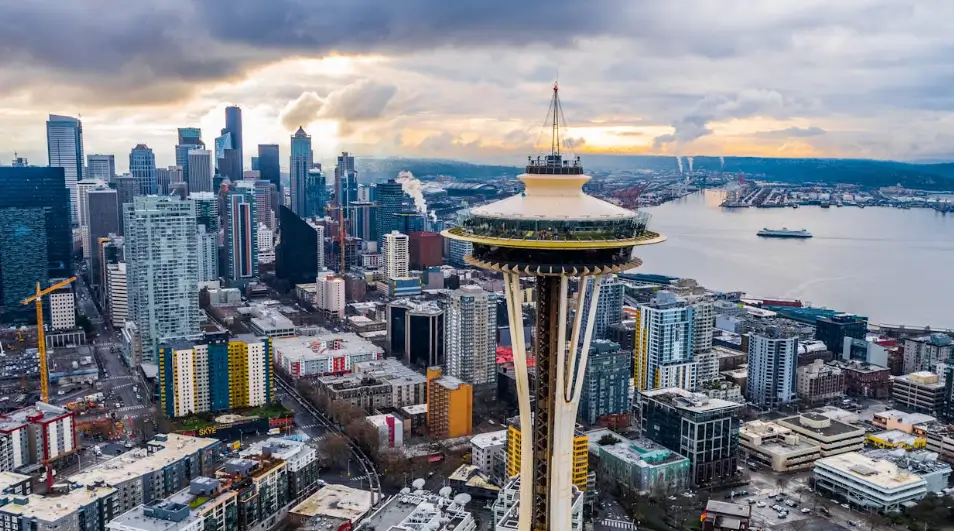Most disasters announce themselves.
Hurricanes roar. Wildfires glow orange against the night sky. Tornadoes leave trails you can see from space.
But some threats whisper.
They don’t arrive overnight, they creep in, inch by inch, until one day, the ground itself has shifted.
That’s what’s happening in Seattle.
The Invisible Disaster
Recent satellite radar data revealed something startling: parts of Seattle are sinking.
Not in a dramatic, disaster-movie way. Rather in a slow, uneven, quietly dangerous way.
Roads are warping. Buildings are tilting. Stormwater drains that used to work now sit below sea level.
It’s called land subsidence, a combination of natural compaction, groundwater withdrawal, and shifting geology. And in a coastal city already grappling with sea-level rise, it’s a slow-motion emergency.
What makes it worse is how invisible it feels.
You can’t film subsidence for the evening news.
It doesn’t trend on Twitter.
It’s the kind of crisis that slips through cracks, both literal and bureaucratic.

A City Rewriting Its Future
Seattle’s planners aren’t ignoring it. They can’t.
As new data pours in, they’re rewriting flood maps, redrawing zoning lines, and rethinking where future growth should go.
Neighborhoods like South Park and the Duwamish Valley, already burdened by industry, heat islands, and flood risk, now face another layer of vulnerability.
Resilience here means reimagining the entire system beneath our feet. That means reimagining things like stormwater, utilities, transportation, and housing, not just defending against the sea.
When the ground itself is shifting, “business as usual” stops being an option.
Resilience Is Not a Buzzword
We throw around the word resilience a lot in planning. Like a lot. It looks great in a grant application. It fills PowerPoint slides and policy goals. It might even impress some in academia.
But real resilience is messy, expensive, and very political.
It means admitting that your infrastructure wasn’t built for what’s coming or even for what’s already here.
But even more than just a willingness to adapt to impending calamities, resilience is about the adaptation of a mindset.
Planners, engineers, and policymakers have to see risk not as a distant threat, but as something that’s already shaping the present.
Because it is.
Seattle’s slow sinking underscores how the most dangerous problems aren’t always the loudest ones.
The Equity Layer
Resilience without equity isn’t resilience at all.
Low-lying neighborhoods, like the Duwamish Valley, are home to working-class and immigrant communities. They already breathe more polluted air, endure more flooding, and have fewer trees than most other people living in Seattle.
Now, they’re also the first to feel the effects of the city’s sinking ground.
If adaptation only happens in wealthy or newly developed areas, all we’re doing is shifting the pain. Away from the "haves" and unto the "have nots".
Resilience only works when it’s built around the people most at risk, not just the ones with the means to adapt.
That means pairing infrastructure upgrades with affordable housing protections, anti-displacement measures, and community-led design.
Otherwise, we’re just planning for gentrification.
The Planner’s Dilemma
Here’s the tough part: cities can’t fix what they don’t acknowledge. Is like that saying "the first step to solving a problem is admitting you have one."
Subsidence doesn’t look dramatic on paper. It’s gradual, invisible, and hard to photograph.
Convincing policymakers to fund projects for something the public can’t even see? That’s an uphill climb...even when the ground is sinking.
But this is where planning proves its worth.
Our job is to look ahead, to see the problems before they surface.
Resilience isn’t just reacting to floods, or hurricanes, or any other natural disaster. Sure, reaction is part of the equation, but resilience is also about redesigning drainage before the flood happens. It’s revising zoning before the damage spreads. It’s listening to geologists and community voices before crisis forces our hand. That’s not glamorous work. To be fair, most of what we do, as planners, is not glamorous. But this is the kind of work that defines a city’s future.
Lessons Beyond Seattle
Not to scare you reader...ok maybe to scare you just a bit. But Seattle is just one example of a slowly sinking city.
Subsidence is happening quietly in cities across the U.S., from Houston and New Orleans to parts of California’s Central Valley. Even Miami, the poster child for sea-level rise, faces similar underground shifts.
It's easier to tackle things that you can see. If you go to a doctor with boils on your skin, it's obvious that you need some level of medical attention. The doctor doesn't really have to convince you of much. But what about heart disease or diabetes? When the doctor tells you to watch what you eat and exercise because you're in danger of an impending problem...do you listen? Do we? It's easier to shrug off that advice because...we can't see the problem.

Climate adaptation can’t just focus on what’s visible.
It has to reach down, into the soil, the aquifers, the buried infrastructure that keeps cities alive.
And that means rethinking resilience as something deeper than just response.
It’s about maintenance, foresight, and honesty.
Designing for the Ground That Moves
For planners and designers, this is a design challenge of a lifetime.
How do you plan for a city that’s slowly changing shape?
You start by layering solutions:
- Data-driven mapping to monitor elevation change in real time.
- Zoning updates that discourage dense development in high-risk zones.
- Infrastructure redesign that allows for flexible systems — storm drains, foundations, and transit corridors that can adapt as the ground shifts.
- Community co-creation, so residents understand and influence what resilience looks like where they live.
And to be fair, this isn’t just a planning problem.
It’s a political one.
Because no matter how good the maps, models, or design ideas are, they still need champions, people willing to take the risk of naming uncomfortable truths.
That’s where elected officials, commissioners, and policymakers come in.
Their role (your role if you are by chance reading this article) is to create the political space where resilience can exist.
To defend science when it’s inconvenient.
To prioritize long-term stability over short-term applause.
A planner can draw the lines, but a commissioner decides if the lines hold.
They decide whether resilience becomes a city’s reality or another unfunded study sitting on a shelf.
Courage, not consensus, is what moves a city forward.
And in the era of shifting ground, literal and political, that courage might be the rarest infrastructure of all.
Cities that master this will be the ones that survive the next century.
The Takeaway
Seattle’s story is a quiet one, no breaking news, no sirens.
Just a slow, steady reminder that the earth we build on isn’t fixed.
Urban resilience starts with humility. We can't rely on billboards, catchy slogans, or fancy presentations to hide the fact that we will face a problem and that problem is slowly getting worse.
To plan for the ground that moves is to accept that permanence is an illusion.
Cities rise and fall, literally and figuratively.
The question is whether we’ll be ready when they shift again.
Because sometimes the next big disaster doesn’t fall from the sky.
It starts beneath your feet.
%20(1200%20x%20237%20px)%20(300%20x%2059%20px).webp)





